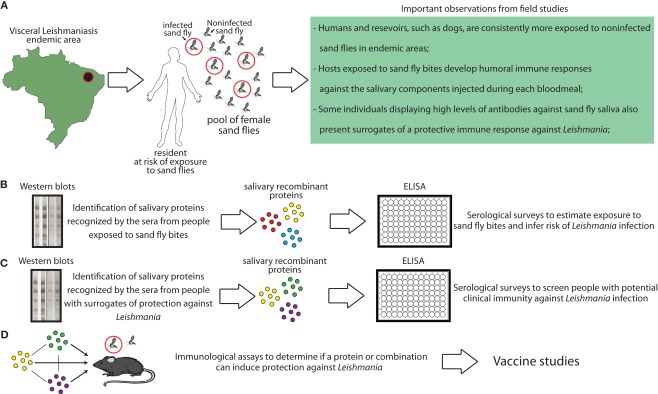Figure 3.
Combining clinical studies with basic proteomic research to generate tools based on sand fly salivary proteins to aid the control of visceral leishmaniasis. (A) Epidemiological and entomological studies have provided critical knowledge to guide development of advanced research studies using sand fly saliva. Proteomic and transcriptome studies made possible to identify and isolate the salivary proteins that are immunogenic and elicit host antibody responses. In addition, we have recently shown an approach to produce large amounts of recombinant versions of these proteins in large-scale (Teixeira et al., 2010). (B) Some proteins are globally identified by the host humoral responses. Such proteins can be used in serological surveys to estimate exposure to sand fly bites and an overall risk to become infected in endemic areas. (C) Other salivary proteins are more frequently recognized by antibodies from people presenting surrogates of clinical immunity against leishmaniasis, such as delayed-type hypersensitivity againstLeishmania antigens. These proteins can also be used in serological surveys in order to identify people with potential protection against infection (Souza et al., 2010). (D) Ultimately, recombinant proteins can be used in experimental models to define potential use in vaccination strategies against leishmaniasis.

